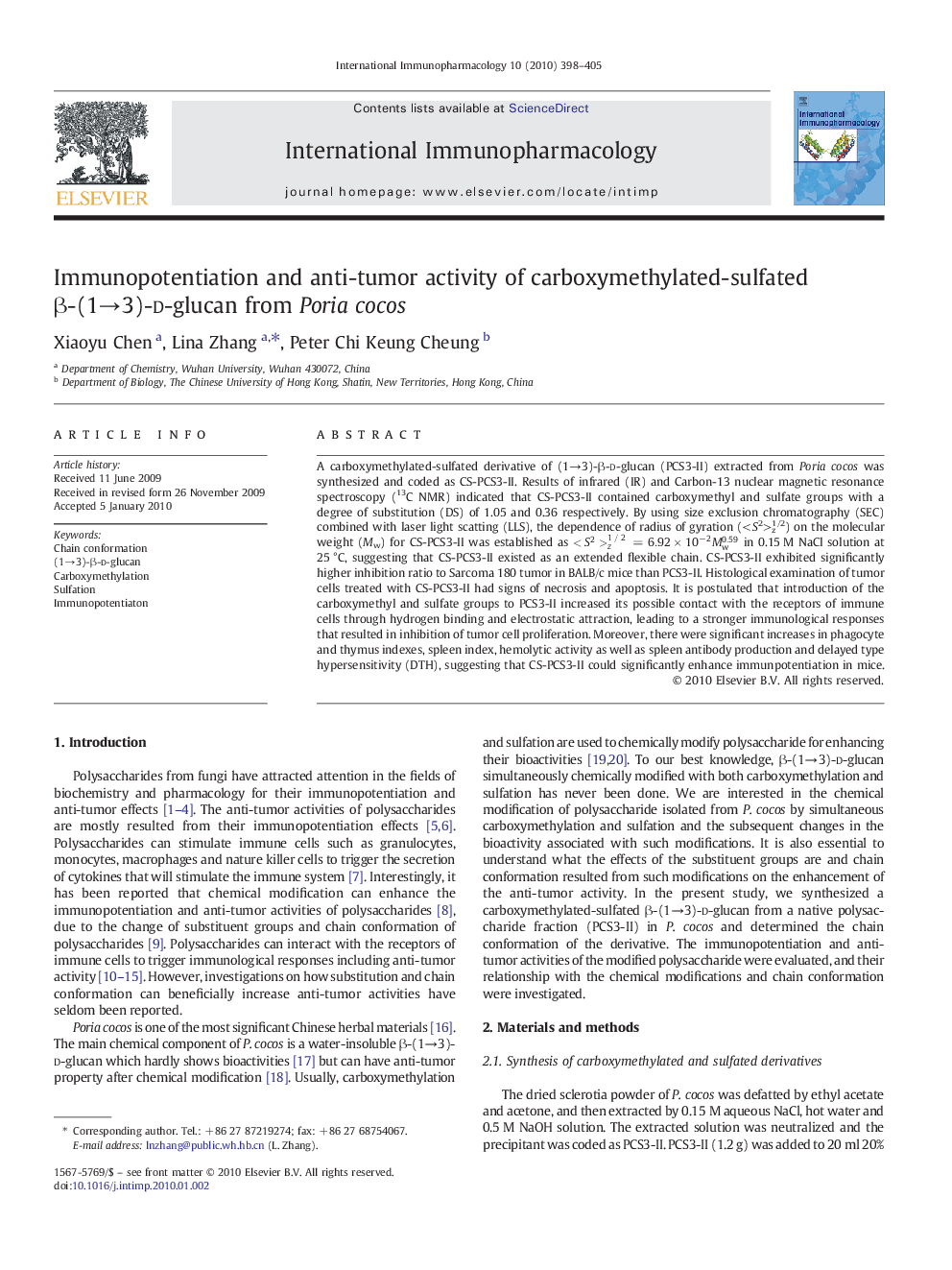| Article ID | Journal | Published Year | Pages | File Type |
|---|---|---|---|---|
| 2541834 | International Immunopharmacology | 2010 | 8 Pages |
A carboxymethylated-sulfated derivative of (1→3)-β-d-glucan (PCS3-II) extracted from Poria cocos was synthesized and coded as CS-PCS3-II. Results of infrared (IR) and Carbon-13 nuclear magnetic resonance spectroscopy (13C NMR) indicated that CS-PCS3-II contained carboxymethyl and sulfate groups with a degree of substitution (DS) of 1.05 and 0.36 respectively. By using size exclusion chromatography (SEC) combined with laser light scatting (LLS), the dependence of radius of gyration (< S2>z1/2) on the molecular weight (Mw) for CS-PCS3-II was established as
